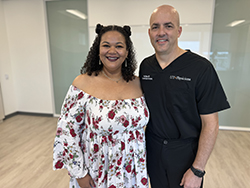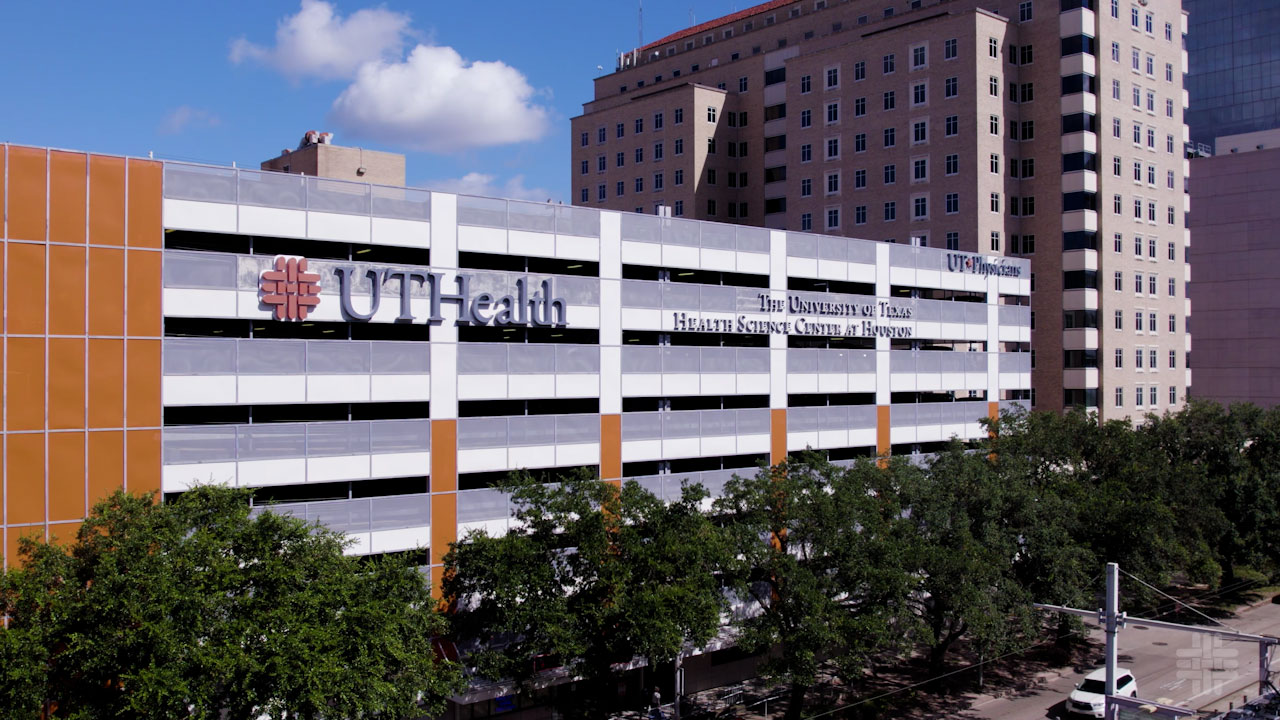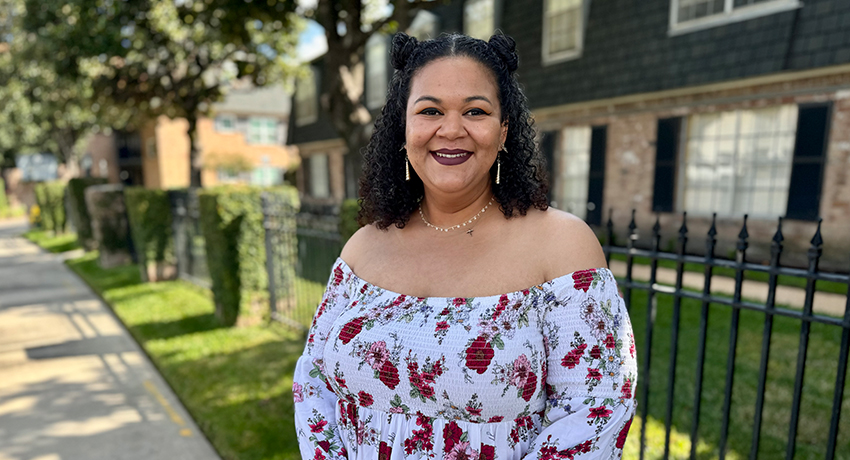Driving to work, walking through the grocery store, and even standing in line are mundane tasks Lauryn Zeno will never take for granted again after a severe knee ligament injury threatened amputation of her foot and took more than a year of recovery.
“This injury changed my perception of trials and tribulations we experience throughout our lifetime. I am truly blessed to have the care and medical treatment that assisted my recovery,” said Lauryn.
Her sense of gratitude changed profoundly in November 2022. She was walking through her living room when she slipped and fell, tearing three of the four ligaments in her knee.
“It felt like something moved that wasn’t supposed to move, and it was extremely painful,” said Lauryn. “I couldn’t get up. I had to stay on the floor while waiting for an ambulance because my knee looked contorted and misshapen.”
A disheartening diagnosis
Lauryn was diagnosed with left knee dislocation with vascular injury.
She had torn several tendons and ligaments: anterior cruciate ligament (ACL) and posterior cruciate ligament (PCL), along with her posterolateral corner (PLC) which includes the lateral collateral ligament (LCL).
She had also torn her left popliteal artery. This large vessel is just behind the knee and is the primary blood supply to the lower leg and foot.
“I was in emergency surgery within hours of falling in my living room,” said Lauryn. “My unknown future was frightening. The artery tear was serious, and I was close to losing my foot.”
Following emergency surgery to redirect blood flow from the torn artery, she was referred to Paul Shupe, MD, an orthopedic surgeon with UT Physicians.
Lost mobility

“When she came to me, her knee was like a rag doll. It was unstable, and she had no confidence in it,” said Shupe, an assistant professor with McGovern Medical School at UTHealth Houston.
The ligaments she tore are vital to stabilizing the knee. The ACL prevents the shinbone from sliding forward through the knee when stepping and pivoting. The LCL and PLC give rotational stability to the knee. The PCL prevents the shinbone from sliding backward when walking on uneven surfaces.
Without the functional use of these ligaments, Lauryn lost her independence. She had to quit her job and move home to live with her parents.
“Leaving my career as a barber in Arlington, a place I called home for 14 years, to return to Beaumont was life-changing,” said Lauryn. “I abruptly lost my independence and witnessed my aging parents become my full-time caregivers. I wanted to do more for myself, but physically couldn’t.”
Multiphase treatment plan
The injury to her knee was complex and extensive, but Shupe, because of his expertise, was able to create a personalized treatment plan for Lauryn quickly.
“I felt there would be a better outcome if we separated the repairs into two surgeries,” said Shupe.
Physical therapy was a major component of Lauryn’s treatment and began even before her first surgery.
“I had her go to physical therapy for a month beforehand to restrengthen her legs,” said Shupe.
Surgery to repair PCL, PLC, and LCL knee ligaments
During the first surgery, Shupe reconstructed her PCL and repaired her PLC, which included the LCL.
Rehabilitation for this surgery required Lauryn’s leg to stay locked in full extension for three weeks, followed by another three weeks of her leg in a brace. She wasn’t allowed to put any weight on the leg during this round of physical therapy.
“The goal during this phase of physical therapy was to build strength in her quadricep, but the only way to do that was by sitting and doing straight leg raises,” said Shupe.
Surgery to repair ACL
Six weeks later, Shupe performed the second surgery to reconstruct Lauryn’s ACL.
Physical therapy started the next day.
“Unlike the first surgery, after this surgery, she had to begin bending her knee immediately,” said Shupe. “I wanted her to start working on range of motion.”
A challenging recovery
Patience was the key to staying optimistic through a long, painful, and mentally challenging recovery.
“My parents cared for me every day for more than 18 months,” said Lauryn. “It weighs heavily on you when you constantly depend on others.”
Lauryn alternated between a wheelchair, walker, and crutches for several months after her last surgery.
“I was doing everything I could to get better,” said Lauryn. “I knew I had to put in the hard work to regain my independence.”
Back to walking
Seven months after the injury that left her immobile on her living room floor, Lauryn was finally able to take her first steps unassisted.
“When I first started my recovery, I couldn’t see the light at the end of the tunnel,” said Lauryn. “This experience helped me realize what I’m capable of through the power of prayer, hard work, and determination.”
One year later, her persistence with physical therapy paid off, and she regained total confidence and motion in her knee.

“She is back to the functionality that she had before her injury, which is the goal,” said Shupe.
Confidence in care
For more than a year, Lauryn and her parents drove from Beaumont to Houston for regular checkups.
“It was worth the drive to receive care from Dr. Shupe,” said Lauryn. “He is very personable and explains everything to me in a way I can understand.”
During many of her post-op visits, Shupe even got down on the floor to explain physical therapy exercises.
“Finding care with Dr. Shupe was the best decision I think I’ve ever made,” Lauryn said. “He is passionate about his work with patients, and it shows.”


